Why you can trust Tom's Hardware
We start out in the RX 5600 XT's sweet spot at 1080p using Ultra settings. Running this configuration, the card averaged 102 fps across all games. In most titles, fps values were well above 60 fps with a majority significantly over 80 fps. Metro: Exodus was the only title below 60 fps (56.9) with four titles (Strange Brigade, Far Cry 5, Final Fantasy XIV, Forza Horizon 4, and Battlefield V) pushing well over 100 fps. The results show this card is more than capable of driving 1080p ultra settings and delivers a smooth gaming experience.
In 5 of the 11 titles we tested, the Gigabyte card ends up faster than the Sapphire Pulse—though it is only by a couple of fps. Across all games averaging the results, the Gigabyte also pulls off another win against the Sapphire, but only by a negligible amount (less than 1 fps). For all intents and purposes, users will not see a difference performance-wise between these two video cards unless they are benchmarking.
The Asus card is slower than both of the other RX 5600 XTs by nearly 6% due to its slower 12 Gbps memory. Comparing the Gigabyte card to the next card up the AMD chain, a reference RX 5700, the Gigabyte is almost 7% slower—an expected result. If we look at Nvidia's direct competitor, a Founders Edition RTX 2060, our Gigabyte RX 5600 XT Gaming OC is 3% faster overall while using a bit less power.
AMD has a winner on their hands with the RX 5600 XT, especially cards like the Gigabyte Gaming OC 6G that have the higher clock and memory speeds while being priced close to or below the $300 price point. Once you start getting into the $330+ range (where the Asus is priced, $340), the RTX 2060 and its overclocked variants come into play.
The Division 2
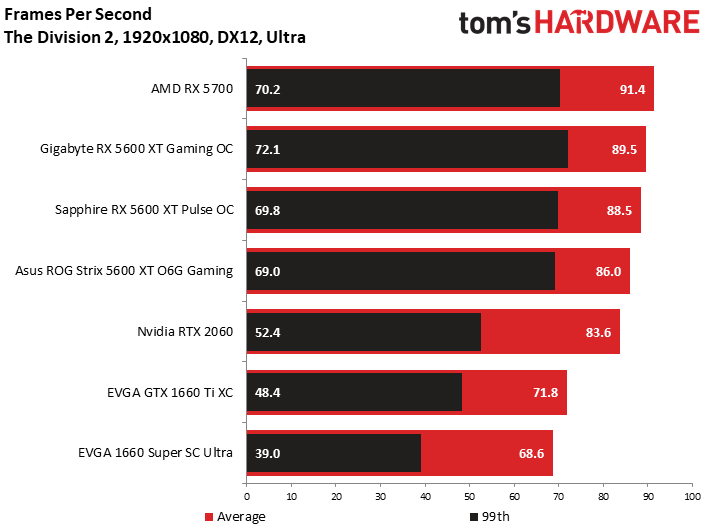
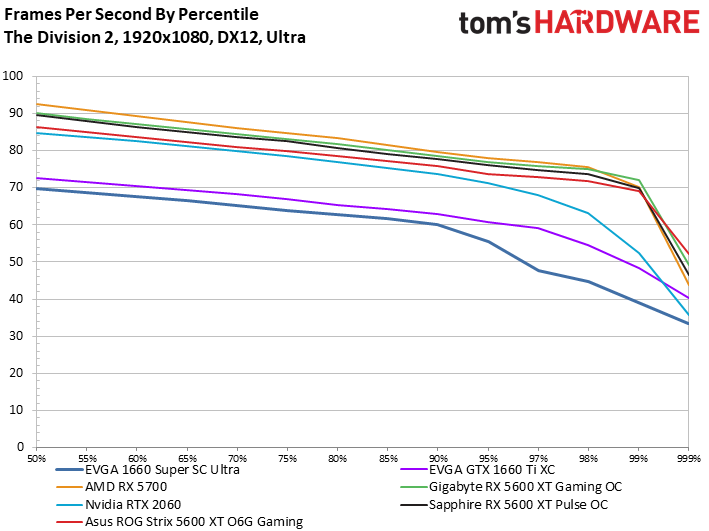
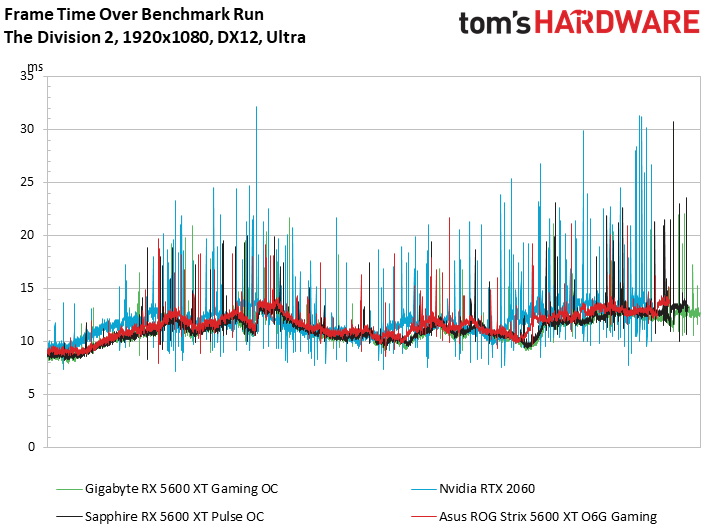
Ghost Recon: Breakpoint
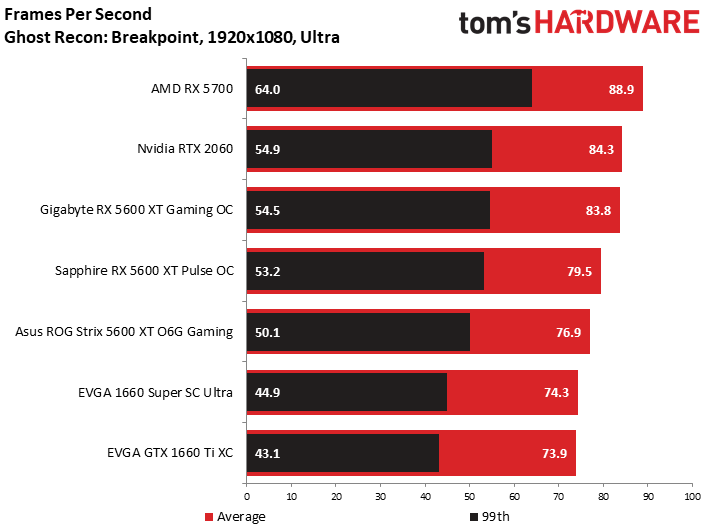
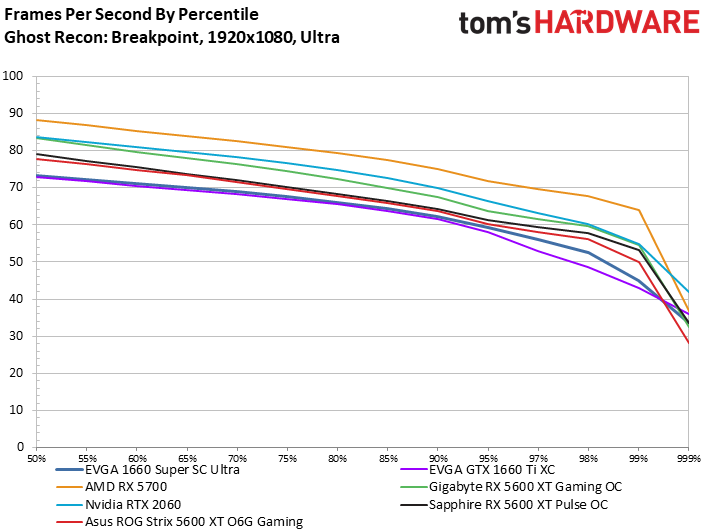

Borderlands 3
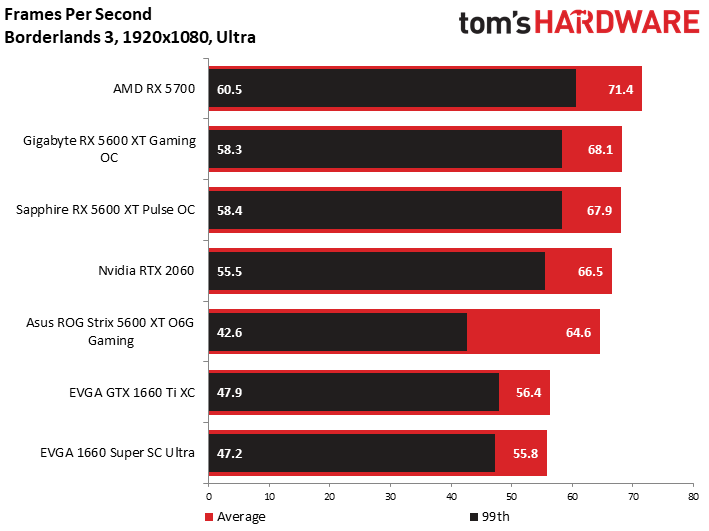
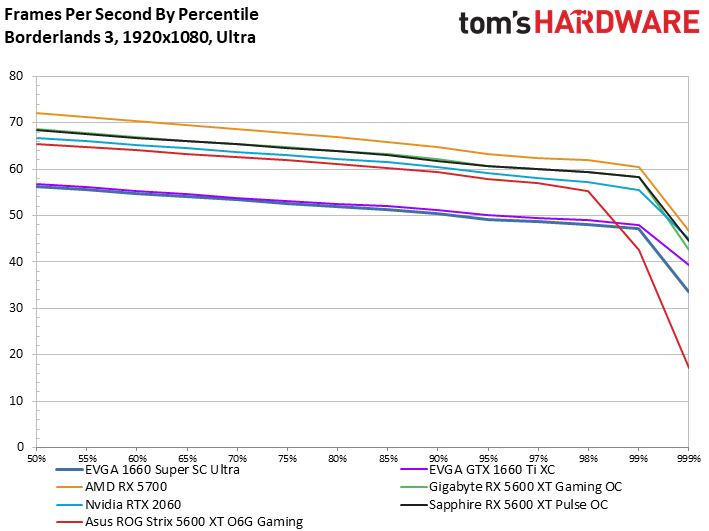
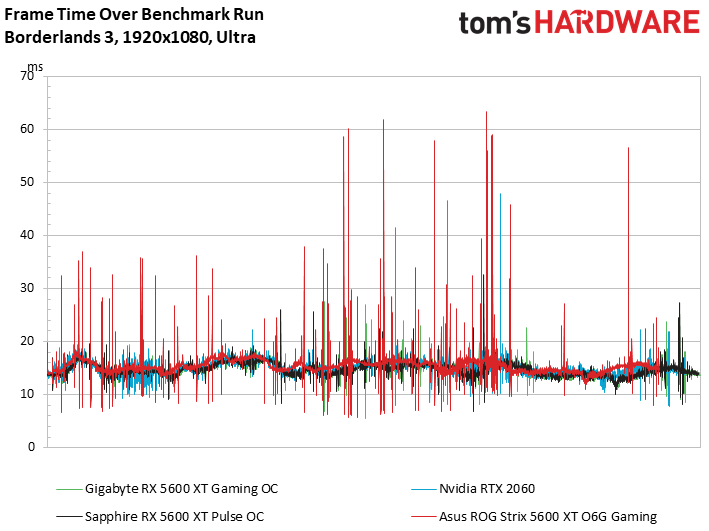
Gears of War 5
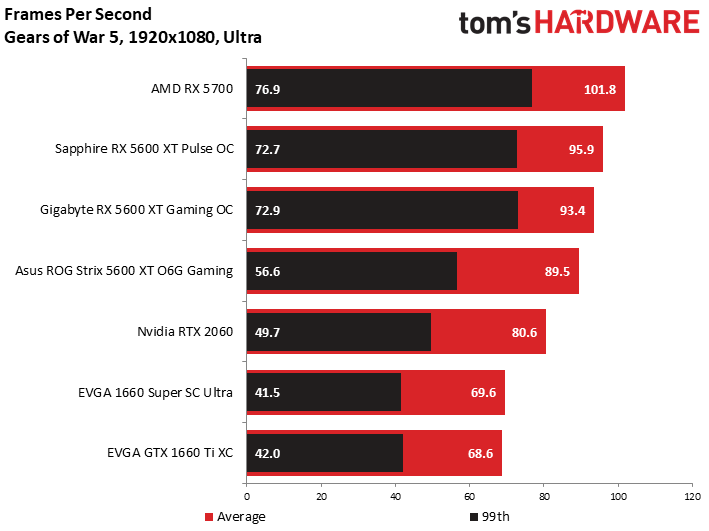
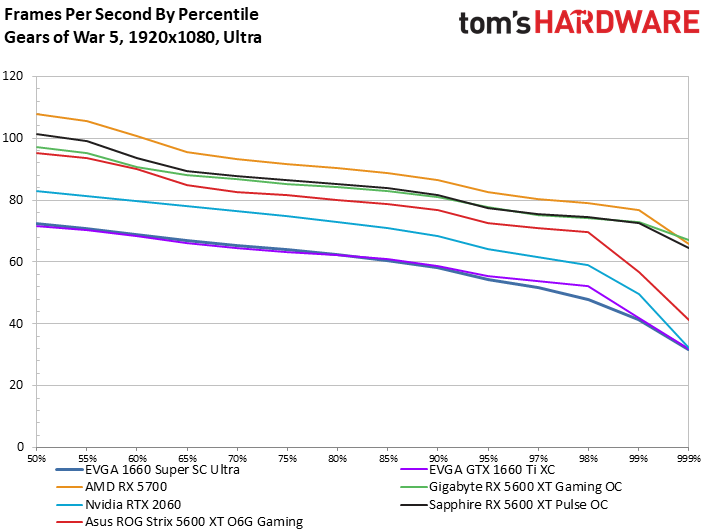
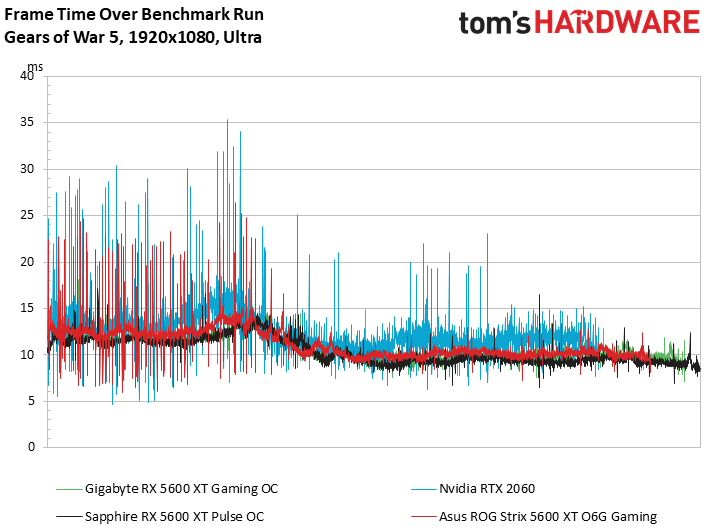
Strange Brigade
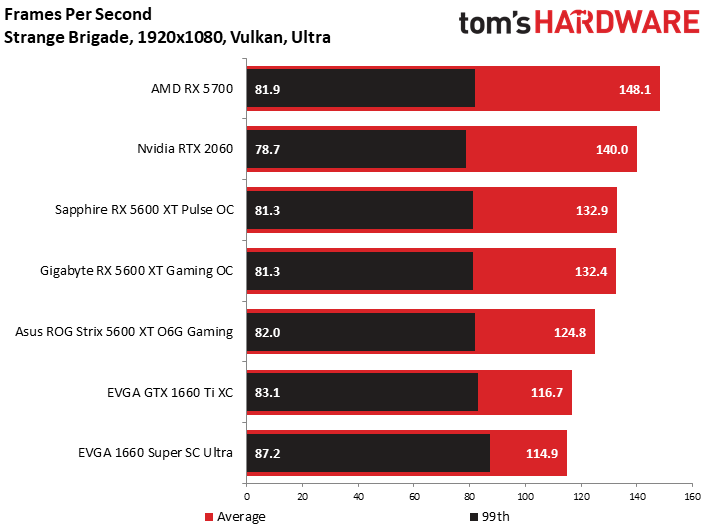
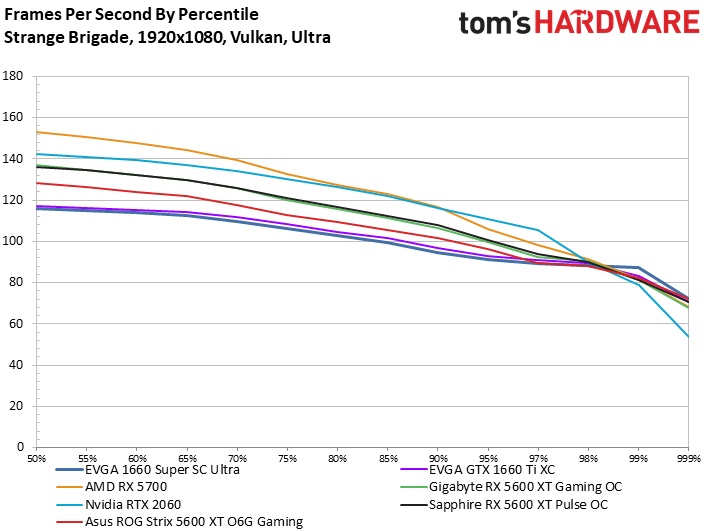
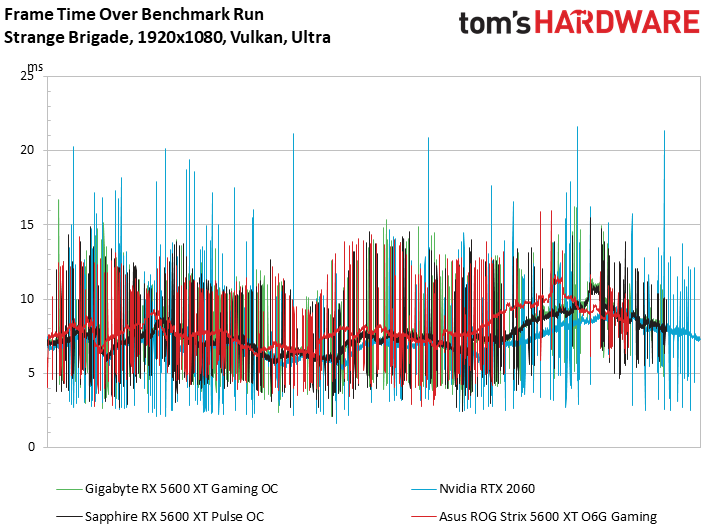
Shadow of the Tomb Raider
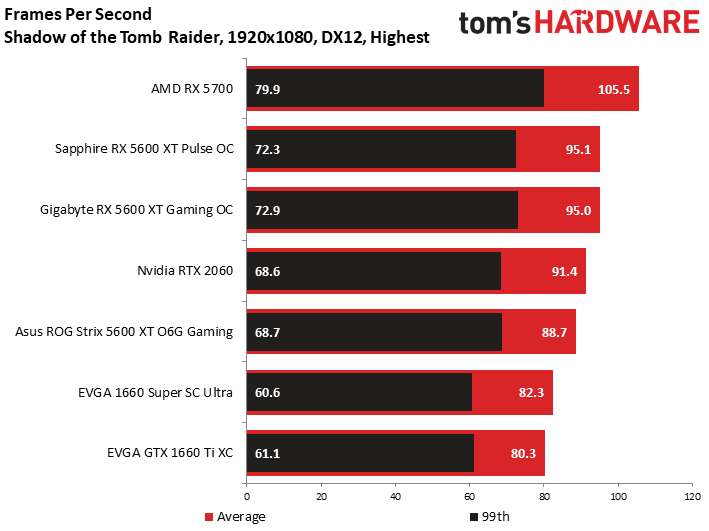
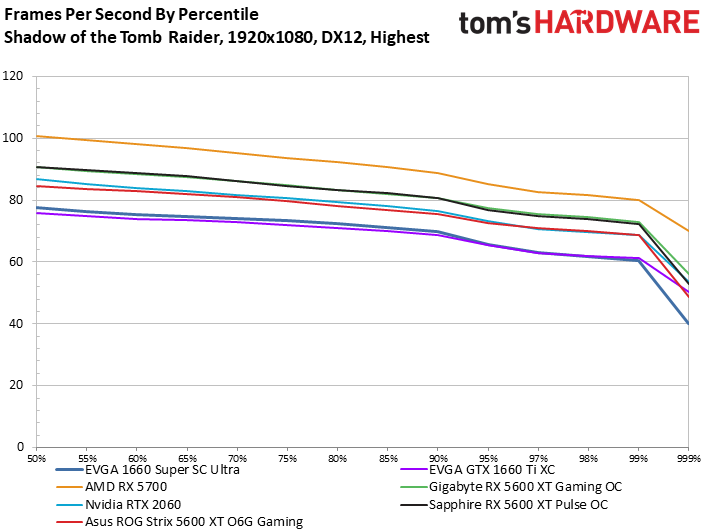
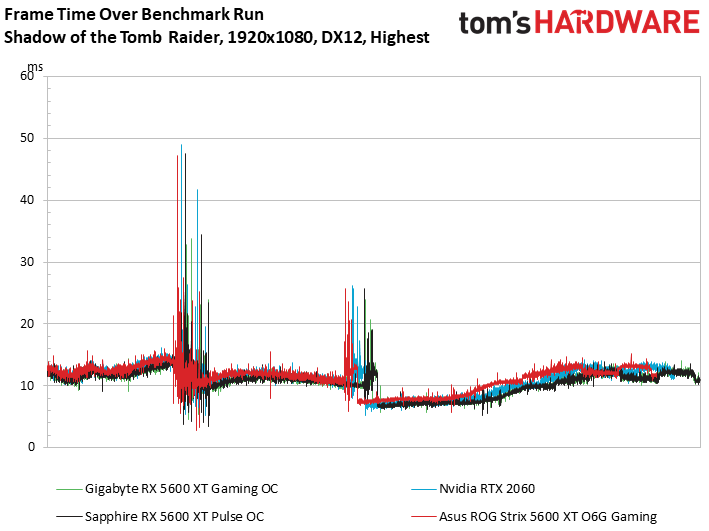
Far Cry 5
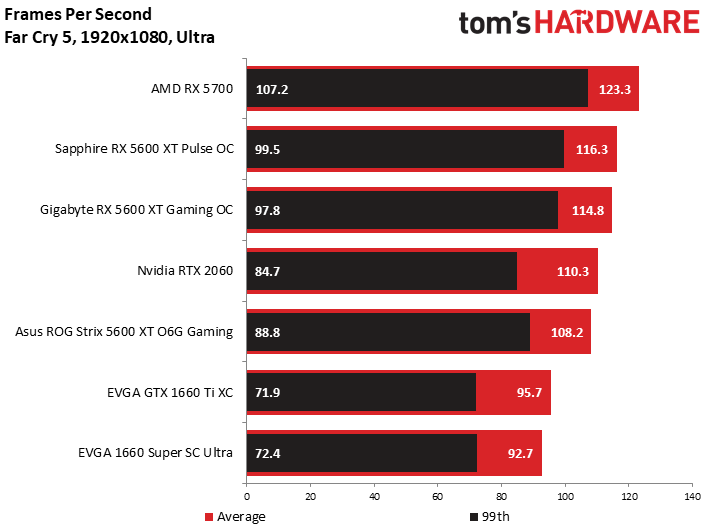
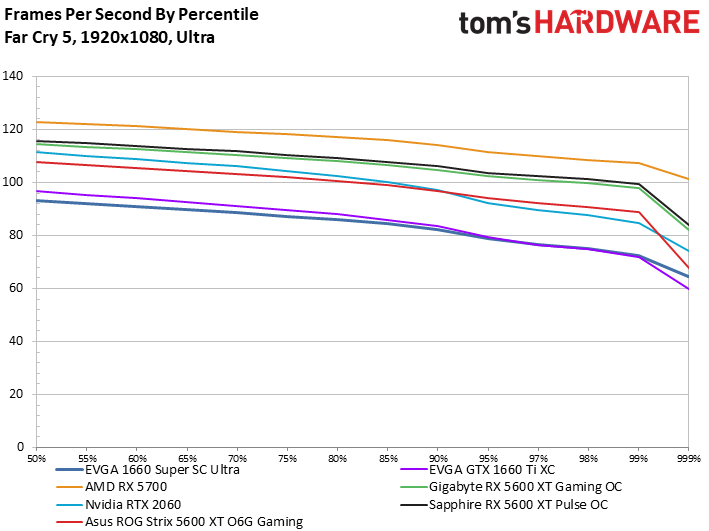
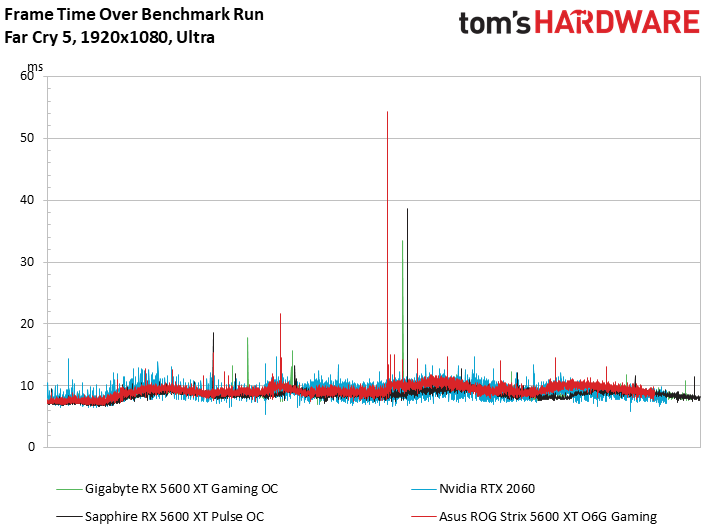
Metro: Exodus
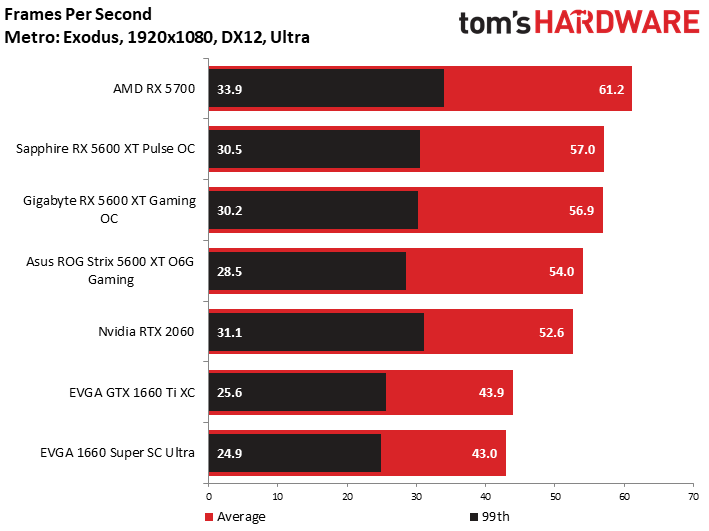
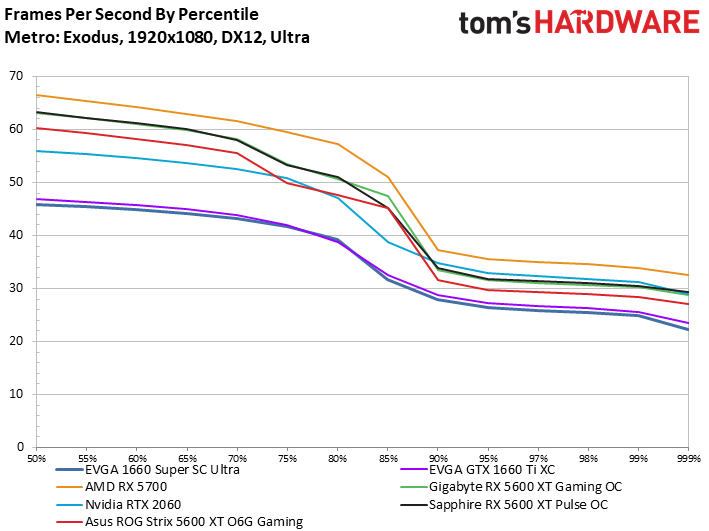
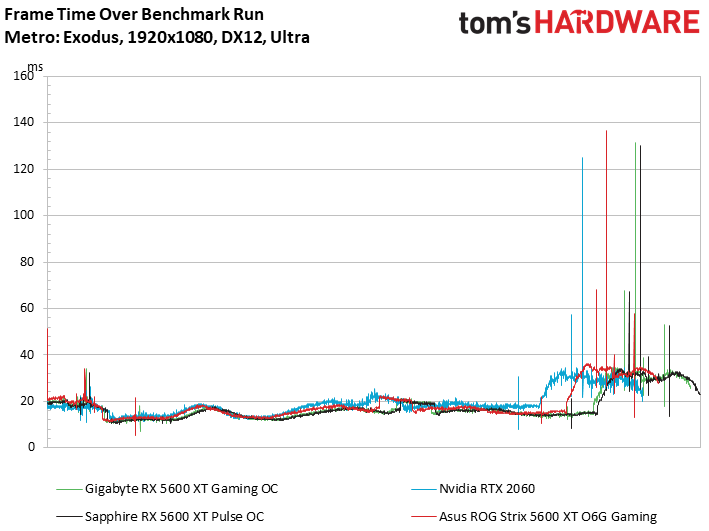
Final Fantasy XIV: Shadowbringers
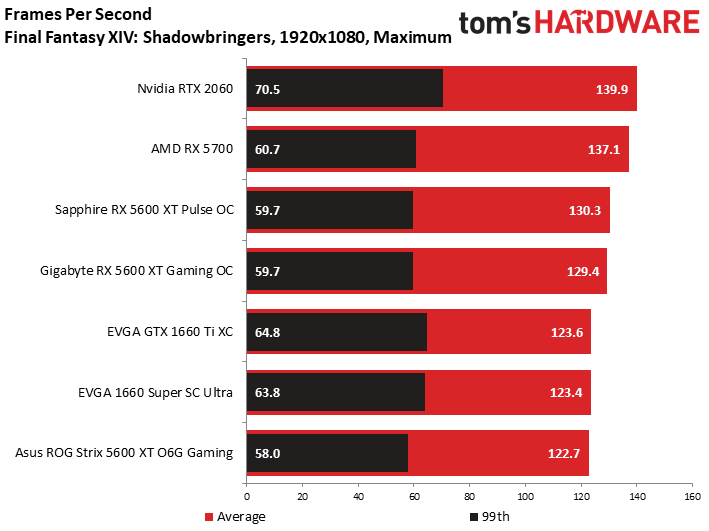
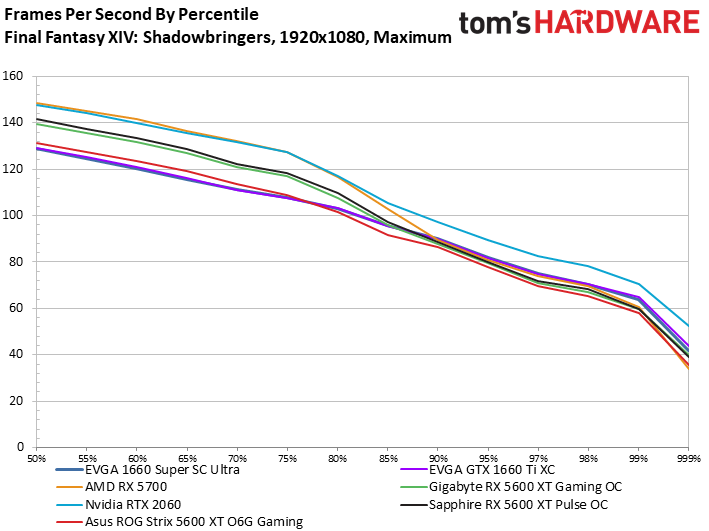
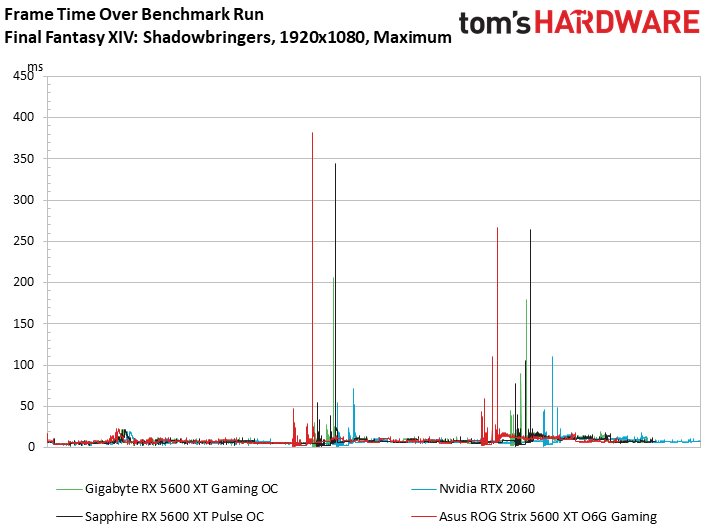
Forza Horizon 4
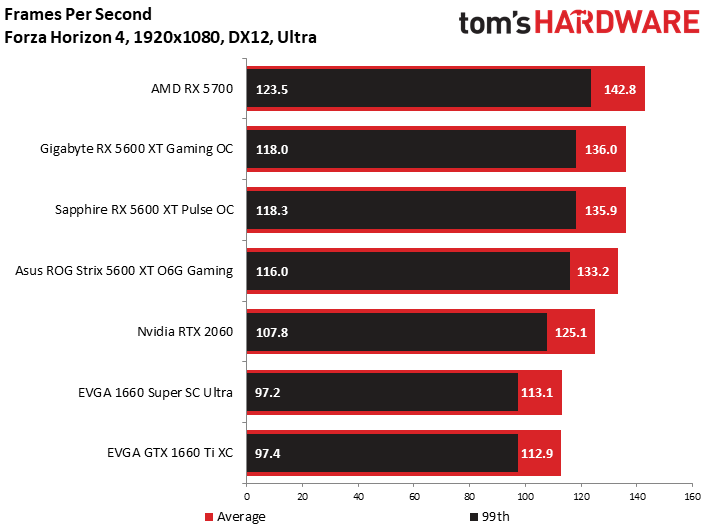
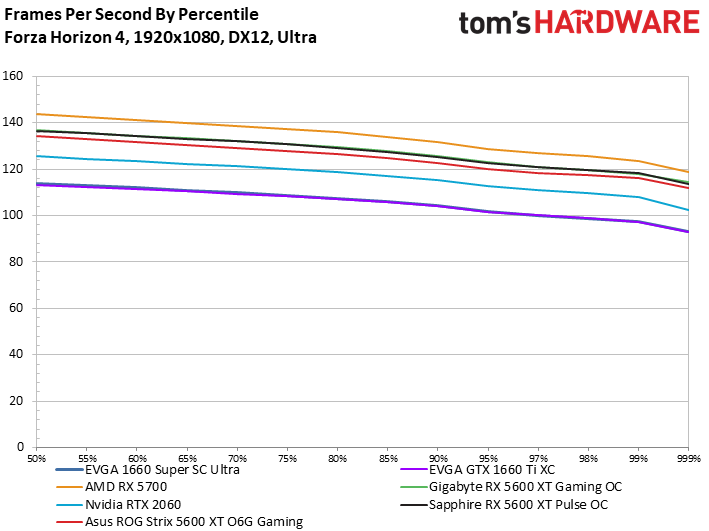
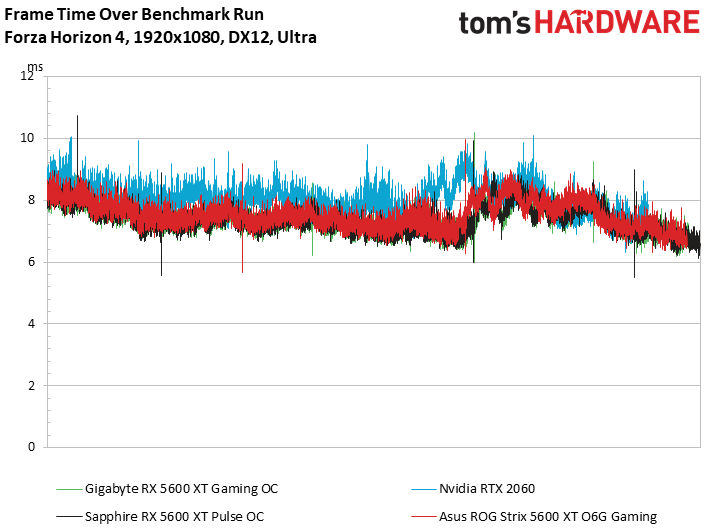
Battlefield V
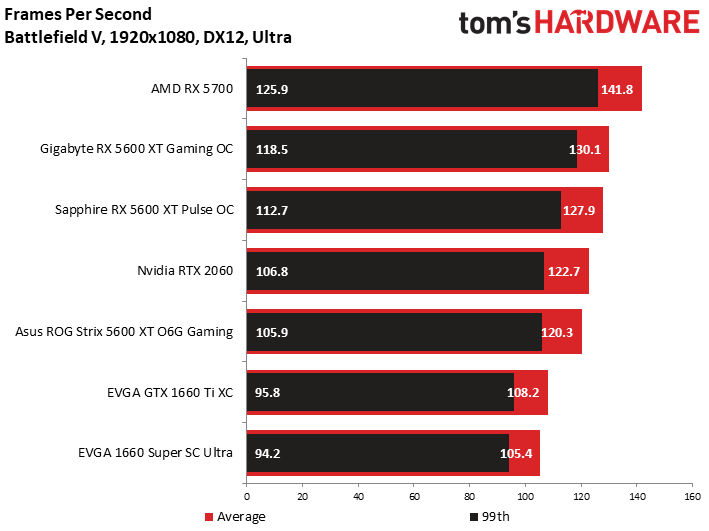
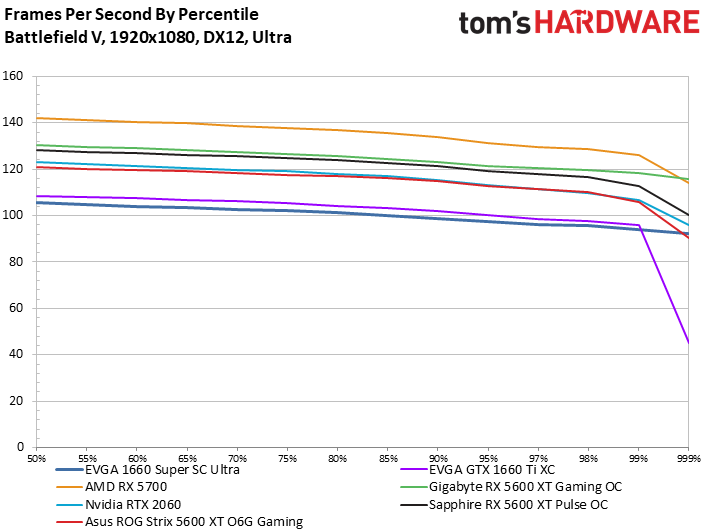
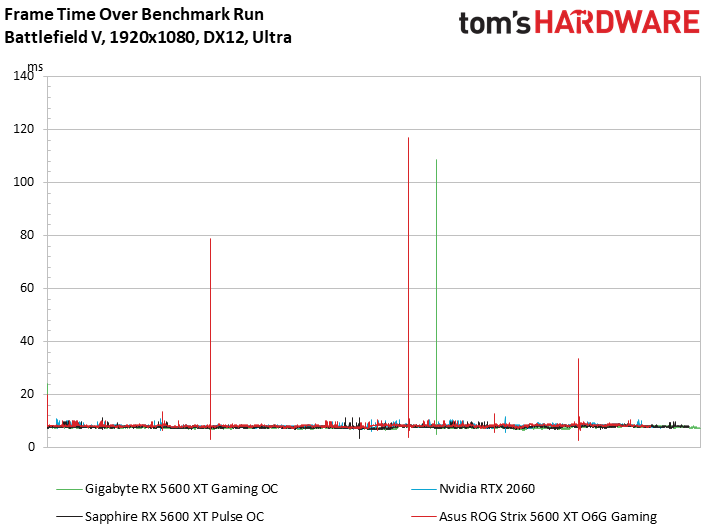
MORE: Best Graphics Cards
MORE: Desktop GPU Performance Hierarchy Table
MORE: All Graphics Content
Get Tom's Hardware's best news and in-depth reviews, straight to your inbox.
Current page: Performance Results: 1920 x 1080 (Ultra)
Prev Page Features and Specifications Next Page Performance Results: 2560 x 1440 (Medium)
Joe Shields is a staff writer at Tom’s Hardware. He reviews motherboards and PC components.
-
King_V Interesting that the fan speeds were higher than that of the Sapphire Pulse, yet the conclusion has "less apparent noise" relative to the Pulse.Reply
And, by the graphs, kept things several degrees cooler.
I think that this Gigabyte model might beat out the Pulse on which one I choose when I do the GPU upgrade for my son's computer. -
AlistairAB ReplyKing_V said:Interesting that the fan speeds were higher than that of the Sapphire Pulse, yet the conclusion has "less apparent noise" relative to the Pulse.
And, by the graphs, kept things several degrees cooler.
I think that this Gigabyte model might beat out the Pulse on which one I choose when I do the GPU upgrade for my son's computer.
Gigabyte can have wacky fan behaviour married to good fans. I usually just set a fixed rpm and call it a day with them, as their zero rpm mode can be bad. Same as Zotac. If you want good zero rpm modes, you have to buy MSI usually. -
g-unit1111 I got the XFX Thicc II 5600XT and I've been pretty pleased with it so far. It's good to see AMD upping their GPU game after losing to NVIDIA for so long.Reply -
Nick_C Reply
Can you please provide a link to that card for sale new at $150?IceQueen0607 said:How does this compare to the MSI GTX 1660 Ti Gaming X?
Given that the GTX 1660 Ti is $150 cheaper, for a small percentage performance improvement It's not really worth the buy?
(given that the 5600XT MSRP is $300) -
You misunderstood. I didn't say the GTX 1660 Ti was $150 new, I said it was $150 less than the RX 5600 XT. I'm in Australia, so prices are AUD.Reply
-
Nick_C Reply
Without stating that the $ being referred to is AUD, not USD, context was lacking - as the default meaning of $ on an international site is almost always USD.IceQueen0607 said:You misunderstood. I didn't say the GTX 1660 Ti was $150 new, I said it was $150 less than the RX 5600 XT. I'm in Australia, so prices are AUD. -
Wow! I actually didn't quote any prices, only saying that it was $150 LESS. The context was supposed to be that it was 25% less than the AMD card. Anyway, if the lack of an A in front of the $ is misleading, I'll stick with percentages.Reply
-
Like I said "Wow!"Reply
The question regardless of what the currency is "If the GTX 1660 Ti is cheaper, is the RX 5600 XT worth the purchase if the performance increase is in the low single digits? I haven't seen any comparisons for those two cards, and I don't trust userbenchmark for performance.
Disappointing that a question about whether or not a card is worth purchasing has come down to a chastening for a missing 'A' in the question :! -
Nick_C Reply
The "25% less" was completely absent from the post quoted - thanks for adding that important detail.IceQueen0607 said:Wow! I actually didn't quote any prices, only saying that it was $150 LESS. The context was supposed to be that it was 25% less than the AMD card. Anyway, if the lack of an A in front of the $ is misleading, I'll stick with percentages.
I'd also expect that new hardware attracts a vendor premium due to initial supply / demand levels. The 1660Ti is probably well down that curve by now whereas the 5600XT is a relatively new release and prices will be on the high side for a while. -
King_V Replyg-unit1111 said:I got the XFX Thicc II 5600XT and I've been pretty pleased with it so far. It's good to see AMD upping their GPU game after losing to NVIDIA for so long.
Wasn't the cooler (or shroud) on the Thicc II problematic for thermals? Or at least it was for the 5700 or 5700XT? I was given to understand that there was some redesign of it, and possibly an exchange program XFX offered... and also why they went to the Thicc III. Kinda going from memory here, though.